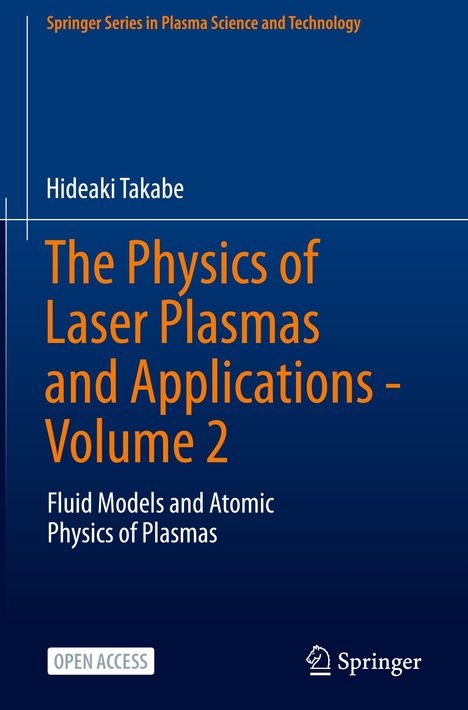Hideaki Takabe: The Physics of Laser Plasmas and Applications - Volume 2, Gebunden
The Physics of Laser Plasmas and Applications - Volume 2
Buch
- Fluid Models and Atomic Physics of Plasmas
- Verlag:
- Springer International Publishing, 03/2024
- Einband:
- Gebunden, HC runder Rücken kaschiert
- Sprache:
- Englisch
- ISBN-13:
- 9783031454721
- Artikelnummer:
- 11811779
- Umfang:
- 476 Seiten
- Nummer der Auflage:
- 2024
- Auflage:
- 2024
- Gewicht:
- 962 g
- Maße:
- 241 x 160 mm
- Stärke:
- 30 mm
- Erscheinungstermin:
- 29.3.2024
- Hinweis
-
Achtung: Artikel ist nicht in deutscher Sprache!
Klappentext
This open access book (Volume 2) is part of the series "The Physics of Laser Plasmas and Applications." It serves as an introduction to the physics of compressible hydrodynamics, which is used to describe the temporal evolution of plasmas generated by intense laser irradiation of solid surfaces. For the benefit of students and young researchers, the book presents the fundamental equations and provides a comprehensible explanation of solutions to intricate fluid phenomena. It builds upon the concept of plasma generation through the heating of matter via the classical absorption of a laser, as expounded in Volume 1. The high-temperature plasma resulting from the laser interaction manifests in diverse hydrodynamic occurrences like shock waves and expansion waves.The initial sections of this book expound the essentials of compressible hydrodynamics, magnetohydrodynamics (MHD), and the physics of shock waves. The transfer of laser energy within an expanding plasma towards regions of higher density is achieved through electron and X-ray transport mechanisms. In both instances, conventional diffusion models prove inadequate, necessitating mathematical frameworks founded on the Boltzmann equation. The conveyed energy engenders ablation pressure, equivalent to tens of millions of atmospheres, on the solid surface. This pressure initiates powerful shock waves propagating through the solid material. The propagation of these shock waves is delineated for scenarios involving planar and spherical geometries. The text also introduces various solutions pertaining to convergent and divergent shocks in spherical geometries using self-similar models.
The discourse then shifts towards ionization and related atomic processes, which govern the dynamics of plasmas created by laser irradiation of mid-Z and high-Z solids. The quantum mechanics of partially ionized atoms and their associated atomic processes are elucidated. Concluding the book is an exploration of the physics of warm dense matter (WDM) an electron system characterized by quantum-mechanical, many-body interactions. The study of high-density plasmas featuring temperatures around 1 eV is undertaken through the lens of density functional theory (DFT). The theoretical breakdown of experimental data acquired via the X-ray free electron laser (X-FEL) is also provided.
In essence, this second volume of the series amalgamates a comprehensive understanding of compressible hydrodynamics, shock wave physics, ionization processes, energy transfer, and the realm of warm dense matter. It equips readers to delve into the intricacies of plasma physics and laser interactions while utilizing modern theoretical frameworks and experimental methodologies.
This is an open access book.


